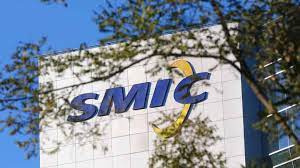SMIC, China’s top semiconductor manufacturer, is facing tough competition against Taiwan's TSMC, the world’s largest chip foundry. Despite the odds, a successful hedge fund manager, Wong Kok Hoi, believes that SMIC can eventually close the gap with TSMC, even though the market capitalization of TSMC stands at an impressive $1 trillion, while SMIC’s is only $50 billion.
Wong, the co-CIO of APS Asset Management, recently shared his optimistic view on SMIC's potential in an interview with Bloomberg TV. He pointed out several strengths SMIC has that could help it achieve its goal. First, Wong emphasized that chip manufacturing today largely depends on capital expenditure (CapEx), with each foundry costing up to $10 billion. However, SMIC has the required capital and the backing of the Chinese government, which gives it an edge.
Moreover, Wong noted that China produces 5 million graduates each year, providing a strong pool of engineering talent. This, combined with China’s large domestic market, could help SMIC grow without needing to rely on the Western markets to achieve economies of scale.
Although China currently lacks access to ASML's EUV lithography machines, which are crucial for cutting-edge chip production, Wong believes that a single Chinese company could develop its own EUV machines. If that happens, the "chip war" could change significantly, and SMIC could emerge as a dominant player in the industry.
Wong did acknowledge that SMIC’s technological challenges are significant, and it will take time for these predictions to come to fruition. SMIC is still bound by limitations, particularly in the 7nm node, and it is likely to remain in this position until 2026, due to ongoing export controls from the U.S.
In contrast, TSMC is pushing the boundaries of innovation. Recent reports have shown that TSMC, in collaboration with NVIDIA, has developed a silicon photonics-based chip prototype. This technology uses light instead of electrical currents to transfer data within microchips, offering higher bandwidth and lower power consumption.
SMIC also recognizes the potential of silicon photonics and is exploring this technology as one of the ways to overcome its current limitations. China’s JFS Laboratory recently made a breakthrough by integrating a laser source with a silicon-based chip, marking a significant step toward advancing its opto-electronics capabilities.
SOURCE: WCCFTECH | PHOTO: GETTYIMAGES
Read More






 Friday, 05-12-25
Friday, 05-12-25







